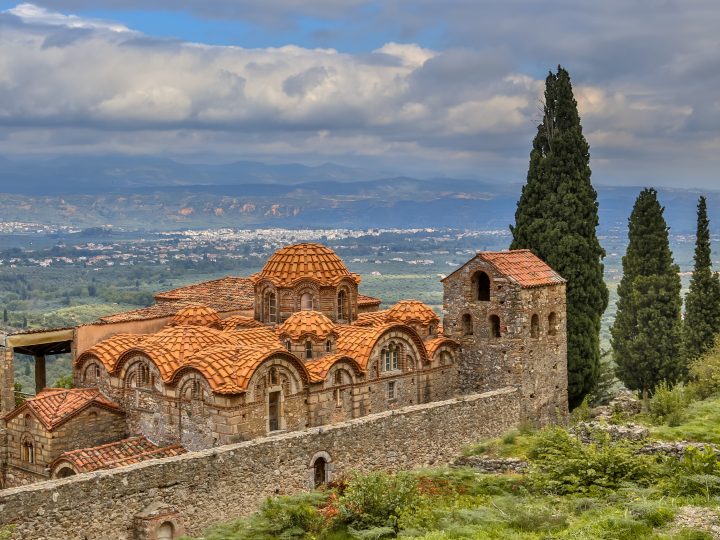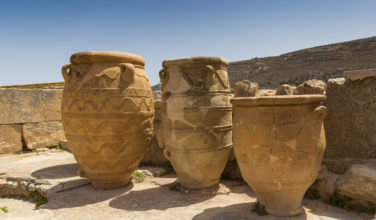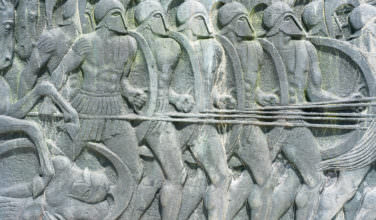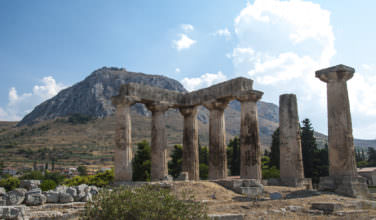All About Byzantine Architecture
Comments Off on All About Byzantine Architecture
 In 285 CE, the Roman Empire separated intwo distinct regions — the Western Roman Empire and Eastern Roman Empire, otherwise known as the Byzantine Empire. In 330, the Emperor Constantine relocated the capital from Rome to Byzantium, i.e. the city of Constantinople. Over time, the Byzantine architecture took on qualities distinct from its western counterpart.
In 285 CE, the Roman Empire separated intwo distinct regions — the Western Roman Empire and Eastern Roman Empire, otherwise known as the Byzantine Empire. In 330, the Emperor Constantine relocated the capital from Rome to Byzantium, i.e. the city of Constantinople. Over time, the Byzantine architecture took on qualities distinct from its western counterpart.
In fact, it was this style that was adopted and developed by both the medieval Europeans that survived and the Muslim Ottomans who conquered Constantinople in the 15th century. While the early designs were very much in keeping with the Western Empire, the two periods that followed saw more innovation in the east.
Early Eastern Roman Empire
Architectural departures in the Byzantine world can forst be seen in churches that were constructed during the reign of Justinian I (527 to 565). The components of construction expanded from stone to include brick and plaster. Likewise more liberty was taken with shapes, incorporating octagonal designs as found at the church of San Vitale at Ravenna, the northern Italian city lost by the western empire but reacquired by the Byzantine Empire in the year 540.
The use of pedantives — embedded elements that allow high, circular domes, for example, to sit atop square or otherwise angled structures — also furthered new directions in architecture. The Hagia Sophia (Macedonia) and Hagia Irene (Istanbul) churches exemplify these advances.
Comnenian Period
The Comnenian — or Komnenian — period (1081 to 1185) saw a resurgence in Byzantium in terms of military strength and geopolitical power. Sadly, architectural examples that would typify this era were largely destroyed during World War I. However, some churches that were converted to mosques like the Zeyrek Mosque that still stand in Istanbul. These evidence a recessed brick technique, where a brick row is veiled by a thick layer of mortar.
Palelogan Period
The Palaiologos dynasty ruled the Byzentine Empire from 1261 until 1453, when Constantinople fell to the Ottoman Turks. Known as the Late Byzantine Empire, this time was marked by fierce battles with encroaching Muslim forces. Byzantine distinctives continued in the form of rounded archways, elaborate columns and the use of mosaics over engraving. Still, church designs during the Palelogan Period eschewed the vertical thrust — force balanced by arches and butresses — more common in the Slavic regions. The result is more simplicity and less opulence in these churches-turned-mosques.
Byzantine Legacies
Multi-hued mosaic tile, brick and stone works would continue into the time of Islamic dominance, as would domes and arches. Moorish architecture, specifically, would employ these notable features. In addition, those countries in which Christianity persisted, like Greece, have maintained basic Byzantine designs well into the 18th century.
In later years, there has been a clear influence of Byzantine architecture throughout the world. For example, neo-Byzantine structures, like London’s Westminster Cathedral, appeared in western countries. Bristol Byzantine, similarly, was another English salute to the style, this time with industrial buildings. There is also evidence of it in Greece.
Source:
Wikipedia – Byzantine Architecture
Categorized in: Modern Greek History
This post was written by Greek Boston





